Discover Gândara – The Green Side of the Sea
Discover Gândara – The Green Side of the Sea …
Using GreenSide of Sea – Hostel
as starting point…
Geography of Gândara
Located in the Central Coastal Zone, Gândara comprises
the coastal strip between Aveiro, Coimbra and Figueira-da-Foz.
Gândara It is by definition Synonymous of “Dune Sand”
Gig.1 – Dunes of da Gândara location on the map of Portugal
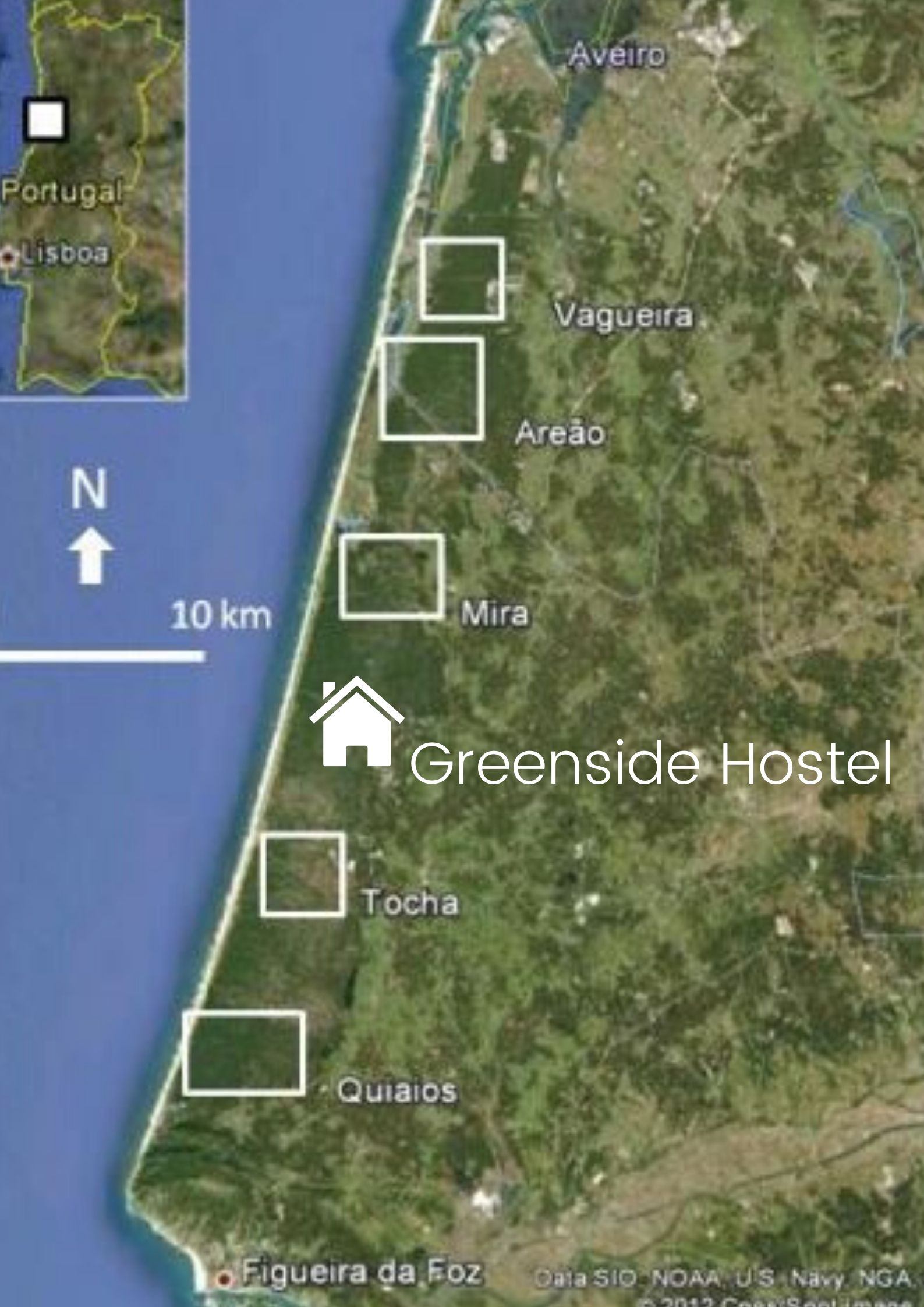
Source here
Gândara has its own Cultural Identity
… strongly linked to Earth and the soil made of dune sand,
to lakes and water courses, to the sea and the forest …
That is where our identity and what we are today is born.
That is where the wealth of what we have to offer was born …
Gandara is Land and Sea … It’s Countryside and Beach
… It’s Modernity and live Tradition …
It´s People that had domesticate the Sand and the Dunes !!!
Find out a little more …
about the lot of the contemporary Gândara has to offer … in the video below.
And from the time of our grandparents …
“A Gandareza Guitar, made in Gândara,
playing a gandarez turns,
by the nails of Confrade Manuel Ribeiro. “
Source: Confraria da Gândara whom we thank,
the work done to keep the Gandareza Culture alive (or is it Gandaresa?
I still haven’t been able to determine which one is correct, clarifications are accepted;))
But if Gândara has today all the comforts of our times,
Covidatives to enjoy a few days of break …
As all the comfort we offer at Greenside of Sea Hostel
It was not always so, and still persist …
Even here near the sea
genuine Villages, like the one where I collected this image
Waiting to be discovered … or maybe not …

Ruins of a typical Gandaresa house, built with traditional Adobe
“… desert villages, forgotten among pine forests,
in the end of the world. In them live men sowing and reaping,
when the summer saves the ears and winter does not fall
in rain and mud. Because then they are twisted branches,
ravines, solitude, in those poor lands (Carlos Oliveira) “
Source: “Gândara – the uniqueness of a territory”
in preface to “Tocha – a History with a future” by Margarida Sobral Neto
Who dedicates his book …
“… to the men and women of the Torch
and his testimony of tenacity in the construction
of a time that was past, is present and will be future. “
The dunes have life of their own …
It was necessary to domesticate the Dunes
So as not to be swallowed by them, and make possible for people to settle … on Gândara!
And today we can enjoy this very generous land …
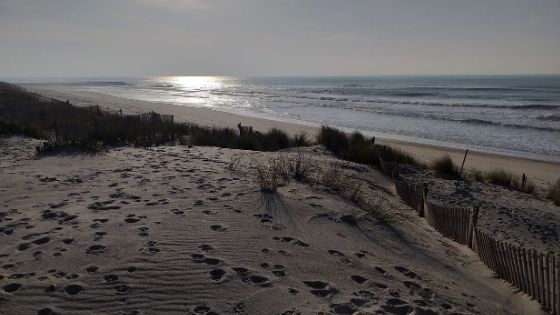
“The most recent dune field, consisting of dunes that still in the beginning of the 20th century
progressed towards the east (Rei, 1940), extended between Quiaios and the proximity
of Ílhavo, developed with a maximum but frequent width of 6 km along
46 km, narrowing to about 2 km in the northern sector. “As shown in fig.1 above
A desert of sterile sands
“A significant part of our sea coasts was made up of extensive …
mobile sand deserts that invaded marginal agricultural land
and obstructed the bars of many of our rivers,
with serious damage to agriculture and the economy of the populations of the seaside. “
The first works to fix the dunes
Unsuccessfully, took place at the end of the 18th century (18)
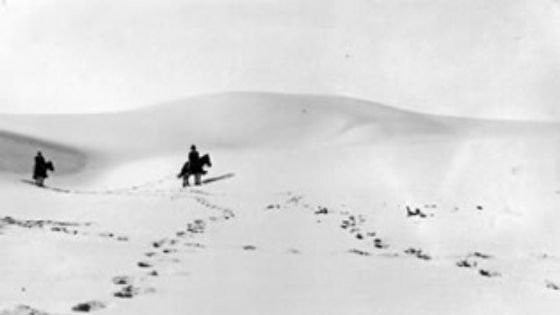
The Fixation and Afforestation of the Dunes of the Gândara Coast
It was one of the most notable works of Portuguese Forestry Engineering
in “Study on the Fixation and Utilization of a part of the Mobile Sands of the Costas de Portugal”, 1881
“Now here is one of the terrestrial dynamics phenomena that should matter most to aportuguezes
on this coast land flooded progressively by the sand
in places that could have been covered for a long time,
in large part of forests, replacing so much uncultivated gandara and marnel
to prevent the growing formation of swamps and fields. “
info site of the General Directorate of Agriculture and Fisheries aqui
But only at the beginning of the 20th century can good results be achieved
Taming the dune with slats and sowing,
reversal (Ammophila arenaria, L.) the precious grass of the sands,
the tree (Artemisia crithmifolia, L.), gorse (Ulex europaeus, L.),
broom (Spartium junceum, L.), shrimp (Corema album, L.),
sargasso (Cistus monopeliensis, L.) that would “encabel” the dunes
fixing them and thus stopping their advance towards the interior.
We can only enjoy the forest that we know today,
between the dunes, next to the sea and the villages
after N109 road, like Corujeira,
Where is the Greenside of Sea – hostel
Because My paternal grandmother – Amabilia and so many others
Gandara Women and Men … fixed the dunes
And they sowed the wild pine tree, watering it with blood,
sweat and tears, and covered the sand, with scrub brought
from the interior, preventing the sands from burying them.
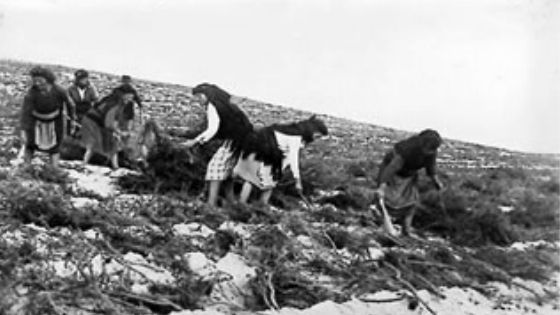
Spreading the bush – 1938
Although it may seem distant … it was in my grandmother’s time.
“The most recent dune field, consisting of dunes that still in the beginning of the 20th century
progressed towards the east (Rei, 1940), extended between Quiaios and the proximity
of Ílhavo, developed with a maximum but frequent width of 6 km along
46 km, narrowing to about 2 km in the northern sector. source aqui
The Local Economy
“The pillars of the Gandaresa agricultural economy are today (and have been,
of time) livestock, maize, potato and horticulture.
Of all these activities the one with the most remote roots is livestock:
transhumant cattle – black sheepes and cattle (and Gândara’s old wild cows)
who started the slow creation of the land by fertilizing it with their waste. ”
Source here
Towards Emigration … searching a better life
Most of the Gândara Men left Portugal, first for Brazil,
then to Europe, mainly to France …
It was up to the woman, to raise her children
and work the land to feed the family.
Gândara and the Marinhôa Race
Oxen and sea cows are inseparable from the Gandara economy,
due to its unique characteristics, docility, easy handling
and great adaptability, started to be used by farmers
in works such as weeding, opening of gullies, crops, sowing,
transport, drawing clueless water and Xávega art,
reaching the height of popularity in the 1940s.
Dairy cows
Gradually the dairy cow replaced the Marinhoa Catlle
Because it added the advantage of producing more milk
than only for calves, thus enabling
a new source of domestic revenue: the sale of milk.
Manual milking and milk delivery
At the end of the workday, and before
taking care of the children and the supper
The woman manually milked the cow,
and deliver the milk to the receiving station …
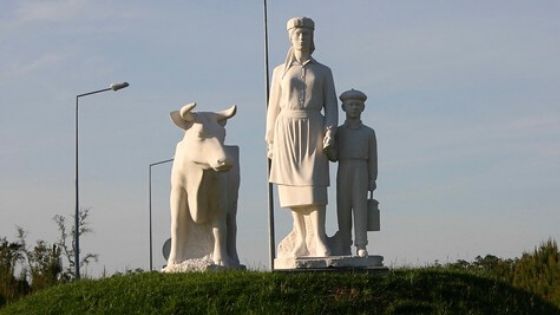
Gândara was an important dairy productive area
From the 70s of the century. XX, with the installation and development
of cooperatives start to appear the collective milking rooms
this being an important dynamizing agent in the dairy sector
small family units, transforming Gândara
In an important area in the national dairy production. Source here
Discover Gândara with the Greenside of Sea Hostel,





